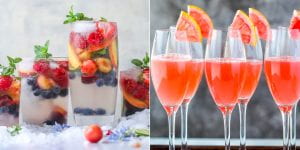The Beginnings
There is a new trend taking off and it will leave you in the dust if you do not catch on: The Sober Curious movement. In a nutshell, “sober curious” or “sober sometimes” means when an individual has consumed alcohol in the past and does not like the way it makes them feel, but that individual is not completely done consuming alcoholic drinks. Confusing right? Splitting up the two words might make more sense.
Sober- not drunk, or not affected by alcohol; abstaining from alcohol.
Curious- eager to learn or know; inquisitive; prying.
Combining both words, we get, someone who identifies as sober curious means they are interested in the idea of abstaining from alcohol or staying sober, sometimes. The sober curious movement creates a culture for people to feel comfortable in their sobriety. Often the first response to someone denying to drink is “what’s wrong with you”, “come on, just have one”, or “you’re boring”. These typical responses are negative and can be corrupting to an individual who is trying to recover from their alcohol dependence. Additionally, negative words towards turning down a drink can lead to irresponsibility when consuming alcoholic drinks, including binge drinking, underage drinking, and risky behavior while drinking.
Social Media Presence
People have practiced sober curiosity long before the term was coined. Remember the post you use to see on Facebook every start to a new year? After an extensive holiday season of eating good and drinking long, your social media friends might have gone to their news feeds to express their sober start to the New Year and challenge their friends to join in on the movement. This public health campaign is better known as “Dry January”.
When a research study conducted in 2016 followed participants of the “Dry January” sober movement, results showed 82% of the participants said they felt like they accomplished more, 62% had better sleep habits, and 49% of the participants stated they lost weight while staying sober. These social media sober challenges did not end at just January, the challenges continued into other months such as “Dry July” and “Sober September”.
(http://foodcardiff.com/take-dry-january-workplace-challenge/)
In recent years, sober social groups and communities have begun to gain recognition. On Instagram, @ASoberGirlsGuide, @SoberGirlSociety, and @TherapyForWomen are just a few examples of unique accounts that are tailored towards living a sober lifestyle and encouraging sober curiosity. Sober Girl Society has over 40 thousand followers, all inspiring to live healthier lives. Not too long ago, the Sober Girl Society provided a post for her followers to discuss in the comments what being sober curious meant to them. Reading through the comments, I could tell that the discussion was meaningful and educating to the followers. Sober Girl Society is providing a safe space for individuals, specifically women, to ask question, seek help, and build a community that encourages sobriety and independence from alcohol.
(https://www.instagram.com/p/BxxvbI2glQH/)
Culturally Acceptable
Although practicing sober curious behavior is not recommended for people who are alcohol dependent, the sober curious movement has sparked ideas for alcohol dependent communities to join in on the culture. Non-alcoholic bars are popping up everywhere. Owner of the sober bar, Sans Bar in Austin, Texas, Chris Marshall has been sober for the past 12 years. He opened Sans Bar to provide a comfortable place where people can socialize, eat drink non-alcoholic drinks, and meet other sober friends. The feedback from Sans Bar has been so accepting that Chris has taken his sober bar on the road. Chris has opened other sober bars in Kansas City and Massachusetts, and has also hosted pop-up bars in popular cities such as New York and Washington D.C.
Additionally, Ruby Warrington, author of the book “Sober Curious: The Blissful Sleep, Greater Focus, Limitless Presence, and Deep Connection Awaiting Us All on the Other Side of Alcohol.”, is also the co-founder of a posh New York City venue called Club SÖDA NYC. Just like Warrington, Club SÖDA NYC is a sober curious social community offering a list of non-alcoholic drink options for consumption.
I believe the sober curious initiative will gain cultural acceptance the more people learn and understand the meaning behind the movement. Proof of the acceptance is in the abundance of social media pages and groups promoting the movement, as well as the communities providing sober atmospheres. The interesting thing about being sober curious is that there is no right or wrong answer as to how much you identify with it. The way everyone expresses their sobriety is unique and personal to themselves. There also is no shame associated with the movement. People can drink, both alcoholic and non-alcoholic, without the having to answer questions, nor feel embarrassment.
Sources:
https://www.ncbi.nlm.nih.gov/pubmed/26690637
http://foodcardiff.com/take-dry-january-workplace-challenge/

















